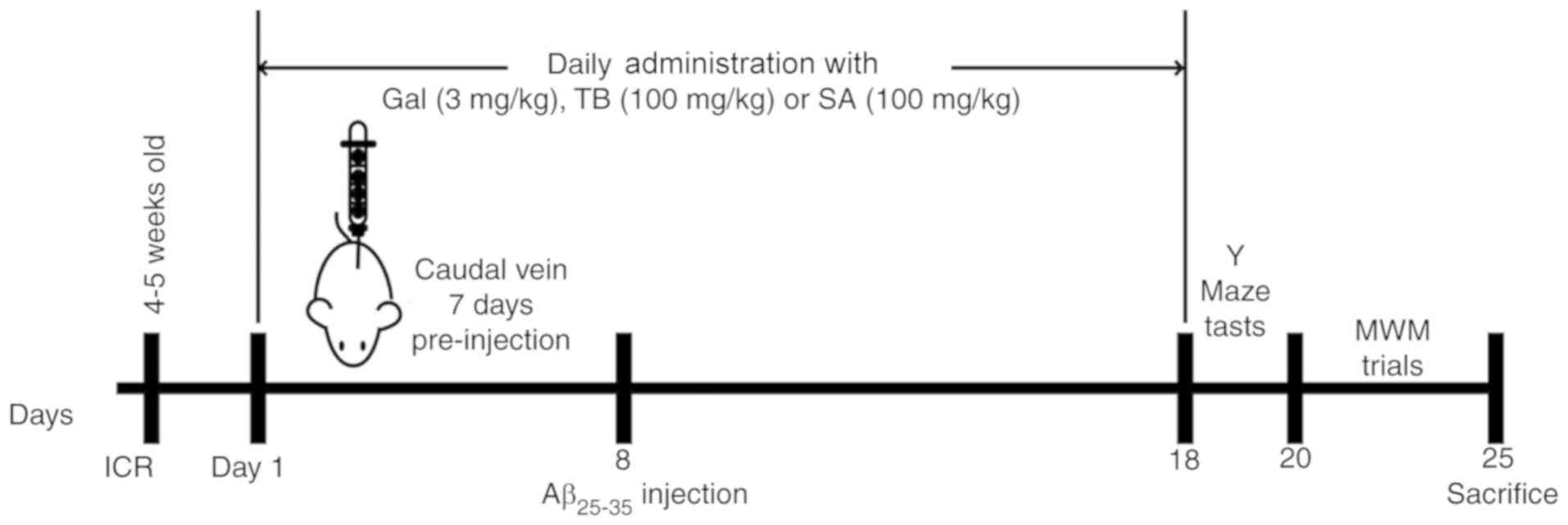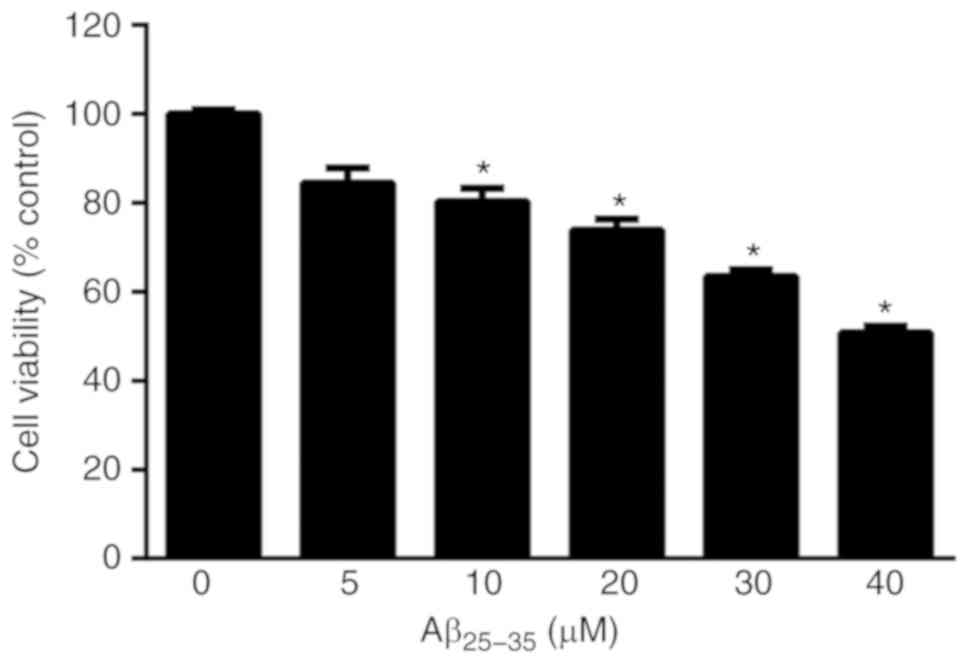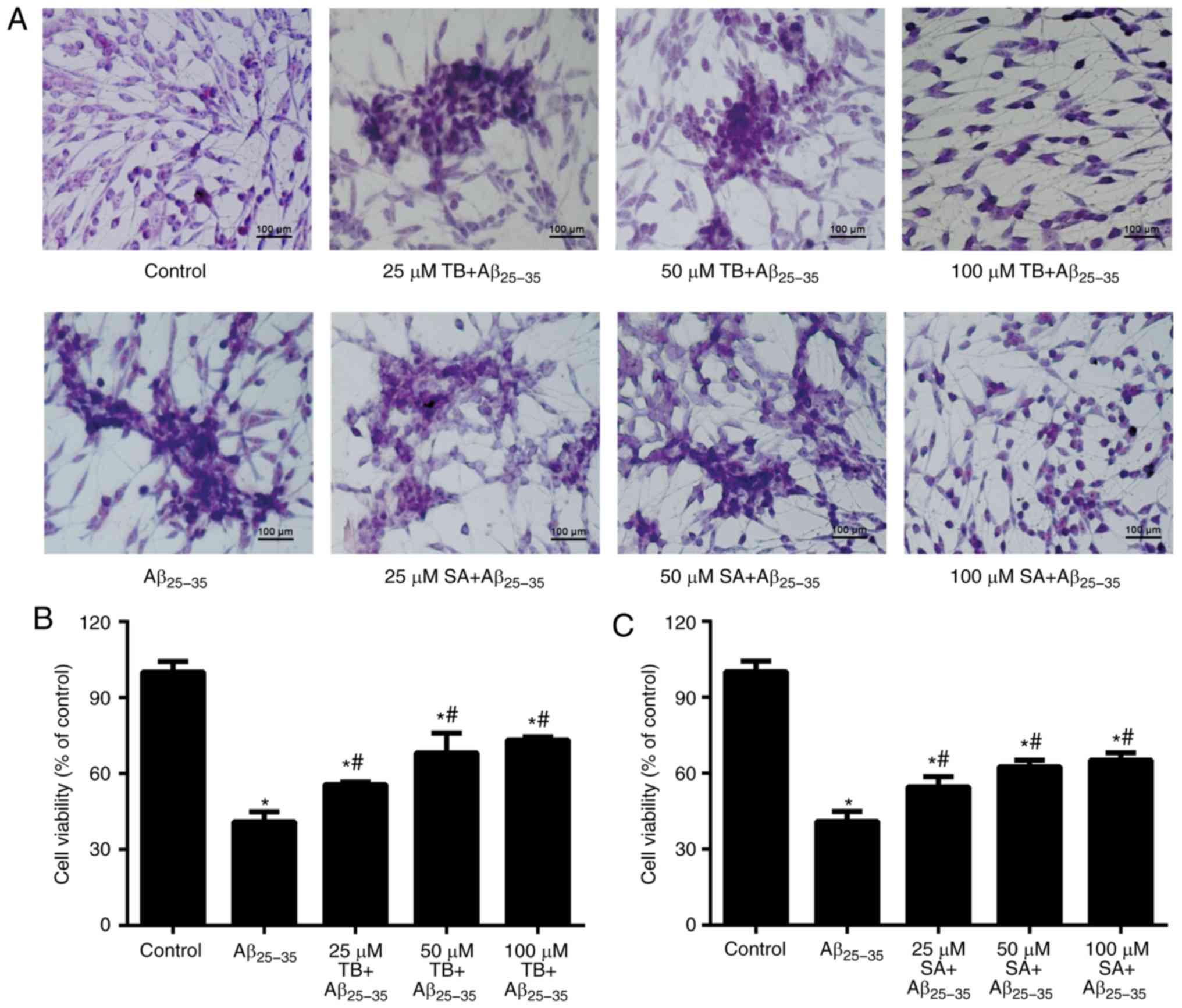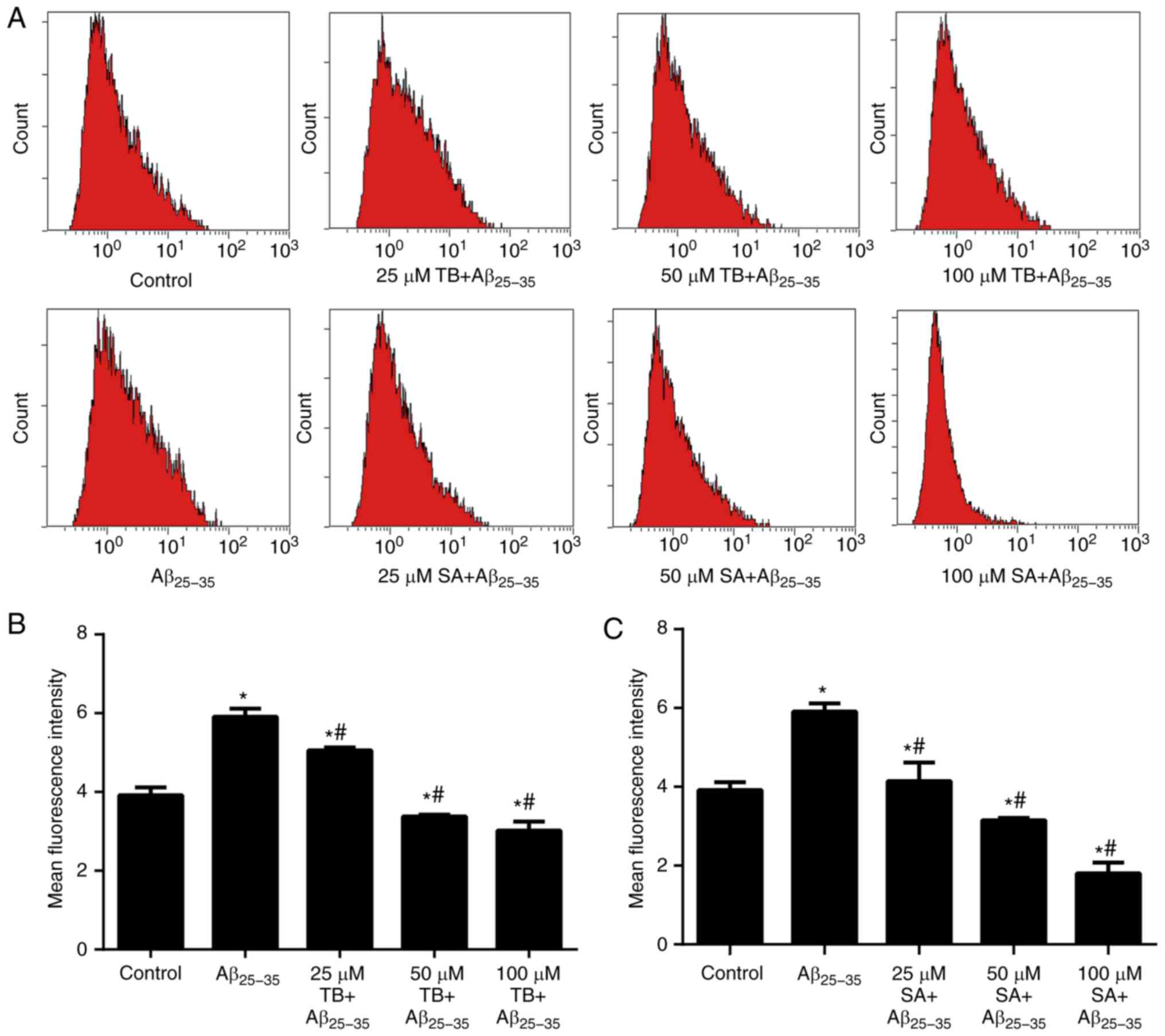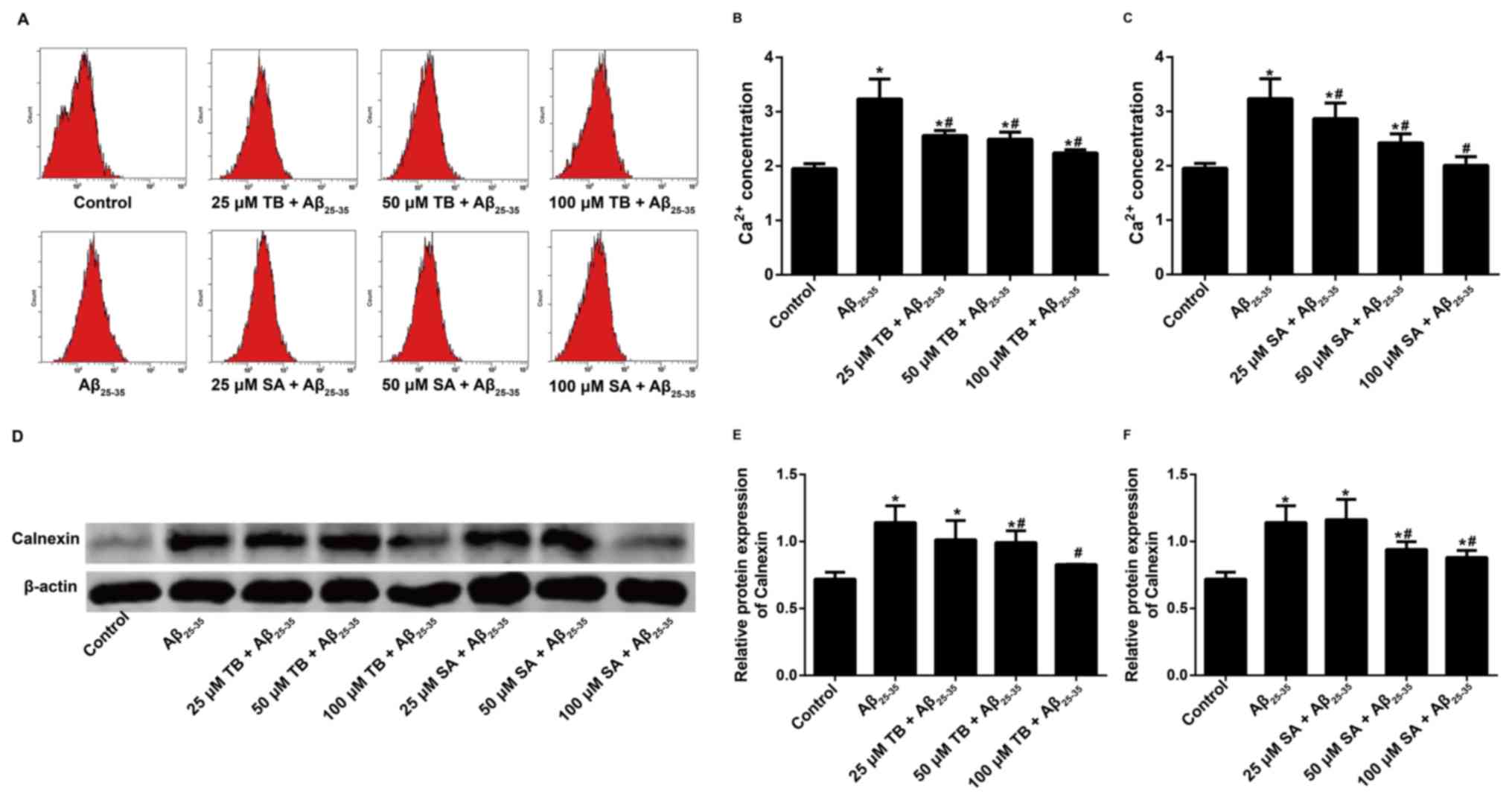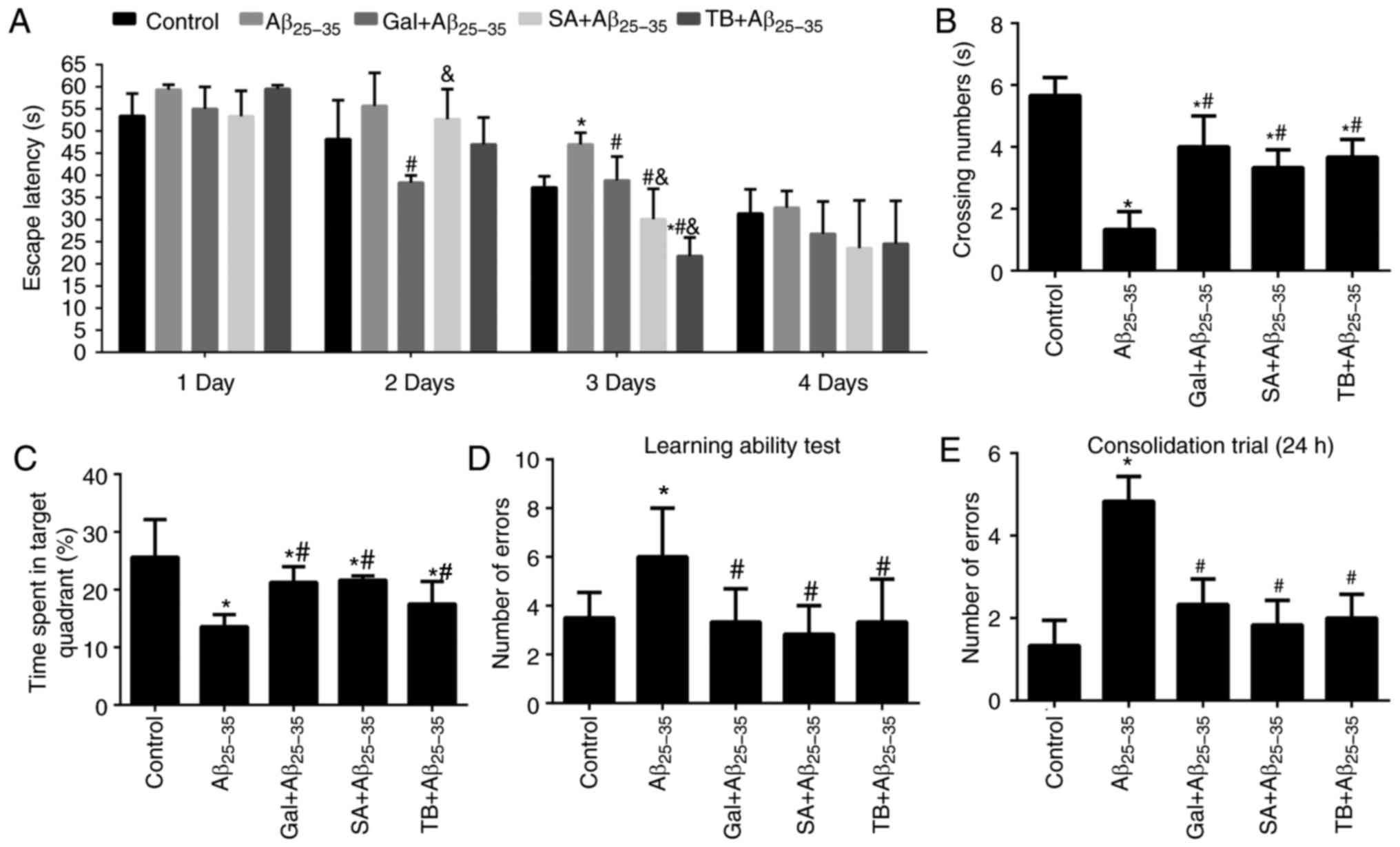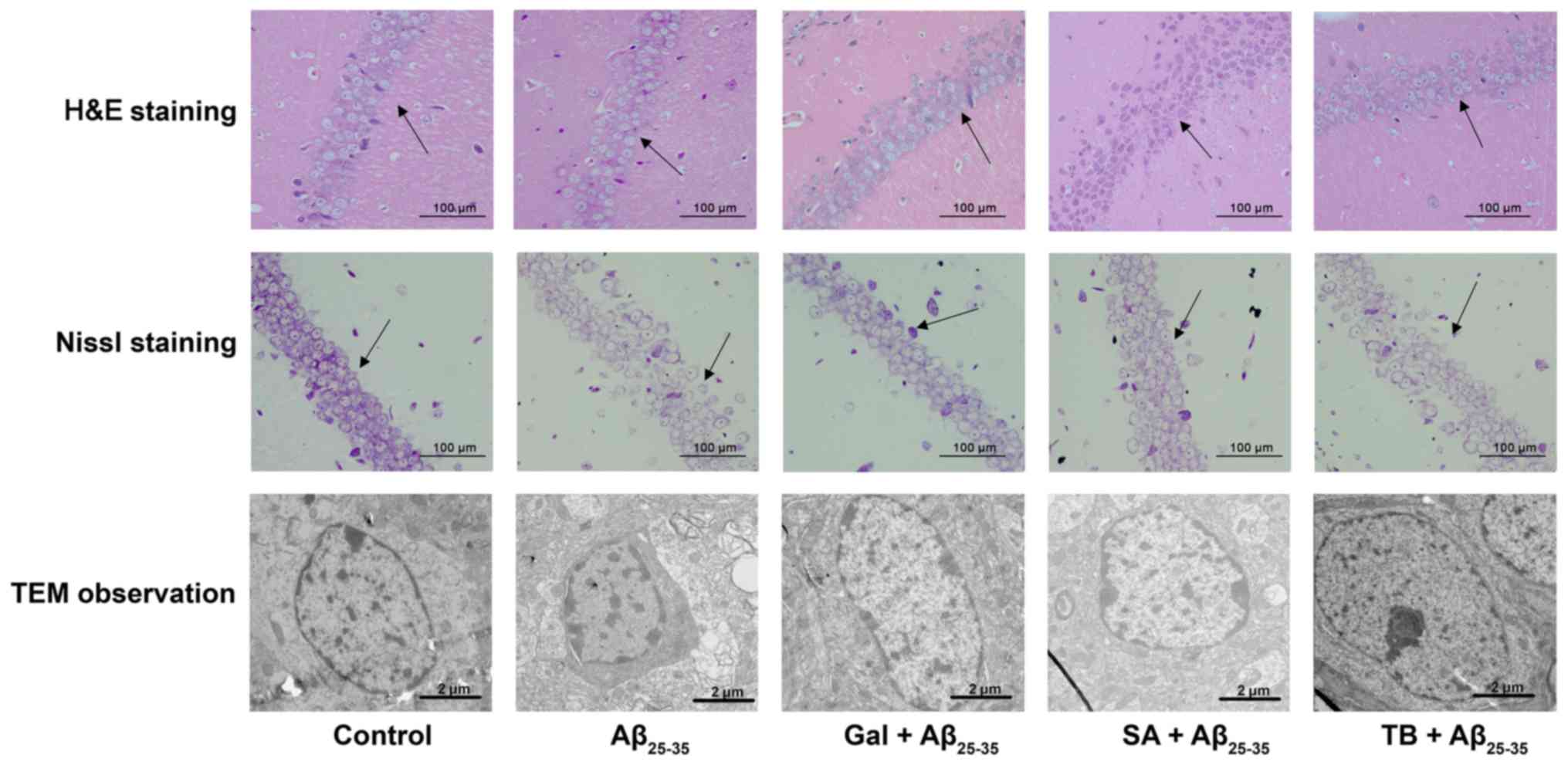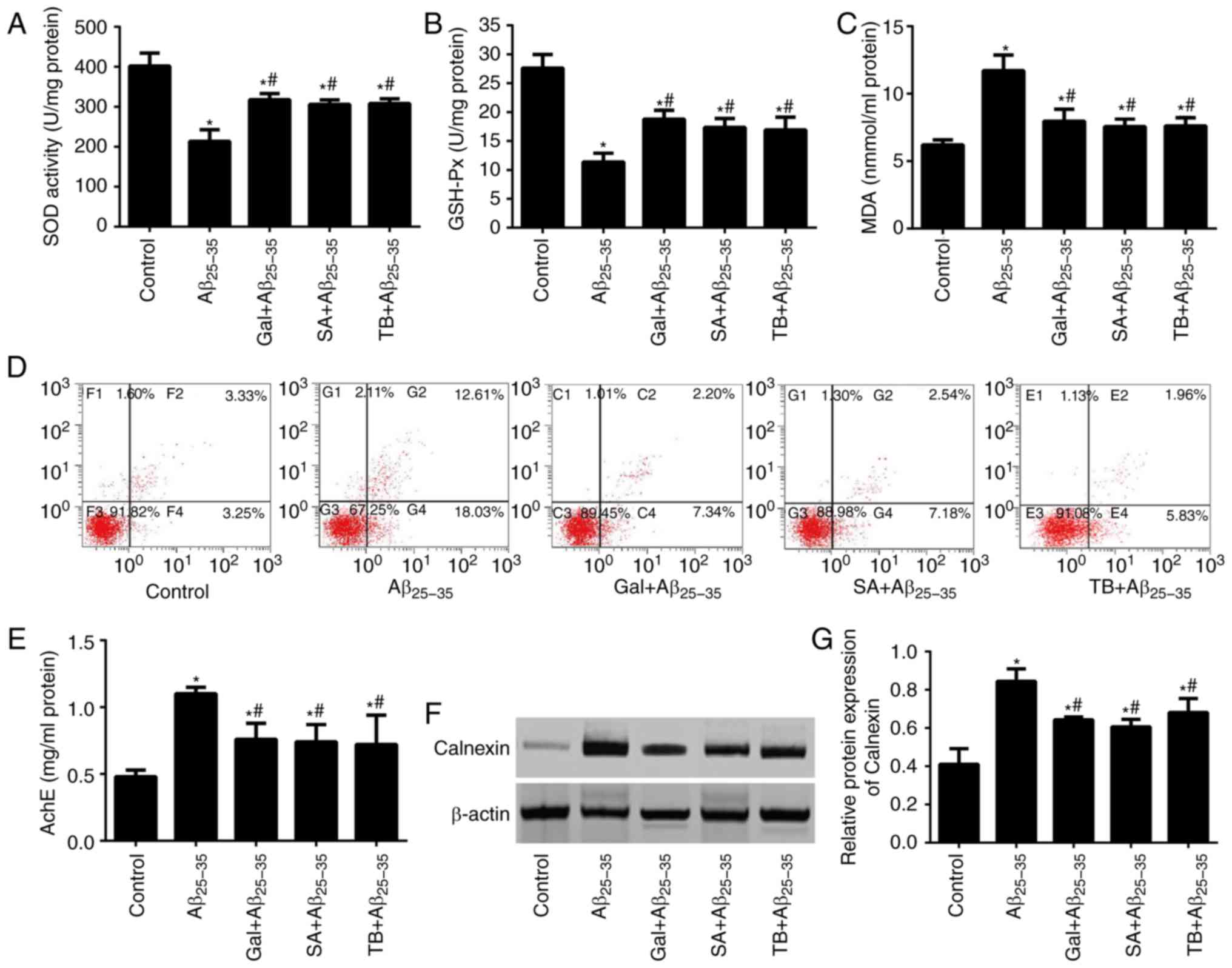|
1
|
Feldman HH and Estabrooks CA: The Canadian
dementia challenge: Ensuring optimal care and services for those at
risk or with dementia throughout the country. Can J Public Health.
108:e95–e97. 2017. View Article : Google Scholar : PubMed/NCBI
|
|
2
|
Josephs K, Whitwell JL, Weigand S, Murray
ME, Tosakulwong N, Liesinger A, Petrucelli L, Senjem M Knopman DS,
Boeve BF, et al: Tdp-43 amplifies memory loss and hippocampal
atrophy in Alzheimer's disease. Alzheimers Dementia. 10:P279–P280.
2014. View Article : Google Scholar
|
|
3
|
Zhang DF, Li J, Wu H, Cui Y, Bi R, Zhou
HJ, Wang HZ, Zhang C, Wang D; Alzheimer's Disease Neuroimaging
Initiative (ADNI), ; et al: CFH Variants affect structural and
functional brain changes and genetic risk of Alzheimer's disease.
Neuropsychopharmacology. 41:1034–1045. 2016. View Article : Google Scholar : PubMed/NCBI
|
|
4
|
Atwood CS, Martins RN, Smith MA and Perry
G: Senile plaque composition and posttranslational modification of
amyloid-beta peptide and associated proteins. Peptides.
23:1343–1350. 2002. View Article : Google Scholar : PubMed/NCBI
|
|
5
|
Kalra J and Khan A: Reducing Abeta load
and tau phosphorylation: Emerging perspective for treating
Alzheimer's disease. Eur J Pharmacol. 764:571–581. 2015. View Article : Google Scholar : PubMed/NCBI
|
|
6
|
Li M, Shi MF, Liu YL, Xu QM and Yang SL:
Phenylethanoid glycosides from Monochasma savatieri and
their anticomplement activity through the classical pathway. Planta
Med. 78:1381–1386. 2012. View Article : Google Scholar : PubMed/NCBI
|
|
7
|
Shi M, He W, Liu Y, Li X, Yang S and Xu Q:
Protective effect of total phenylethanoid glycosides from
Monochasma savatieri Franch on myocardial ischemia injury.
Phytomedicine. 20:1251–1255. 2013. View Article : Google Scholar : PubMed/NCBI
|
|
8
|
Liu YL, He WJ, Mo L, Shi MF, Zhu YY, Pan
S, Li XR, Xu QM and Yang SL: Antimicrobial, anti-inflammatory
activities and toxicology of phenylethanoid glycosides from
Monochasma savatieri Franch. ex Maxim. J Ethnopharmacol.
149:431–437. 2013. View Article : Google Scholar : PubMed/NCBI
|
|
9
|
Hu XP, Shao MM, Song X, Wu XL, Qi L, Zheng
K, Fan L, Liao CH, Li CY, He J, et al: Anti-influenza virus effects
of crude phenylethanoid glycosides isolated from ligustrum
purpurascens via inducing endogenous interferon-γ. J
Ethnopharmacol. 179:128–136. 2016. View Article : Google Scholar : PubMed/NCBI
|
|
10
|
Yang J, Ju B, Yan Y, Xu H, Wu S, Zhu D,
Cao D and Hu J: Neuroprotective effects of phenylethanoid
glycosides in an in vitro model of Alzheimer's disease. Exp
Ther Med. 13:2423–2428. 2017. View Article : Google Scholar : PubMed/NCBI
|
|
11
|
Shao SY, Feng ZM, Yang YN, Jiang JS and
Zhang PC: Forsythenethosides A and B: Two new phenylethanoid
glycosides with a 15-membered ring from Forsythia suspensa.
Org Biomol Chem. 15:7034–7039. 2017. View Article : Google Scholar : PubMed/NCBI
|
|
12
|
Roura E, Andrés-Lacueva C, Estruch R and
Lamuela-Raventós RM: Total polyphenol intake estimated by a
modified Folin-Ciocalteu assay of urine. Clin Chem. 52:749–752.
2006. View Article : Google Scholar : PubMed/NCBI
|
|
13
|
Kowall NW, McKee AC, Yankner BA and Beal
MF: In vivo neurotoxicity of beta-amyloid [beta(1–40)] and the
beta(25–35) fragment. Neurobiol Aging. 13:537–542. 1992. View Article : Google Scholar : PubMed/NCBI
|
|
14
|
Liu YM, Li ZY, Hu H, Xu SP, Chang Q, Liao
YH, Pan RL and Liu XM: Tenuifolin, a secondary saponin from
hydrolysates of polygalasaponins, counteracts the neurotoxicity
induced by Aβ25–35 peptides in vitro and in vivo. Pharmacol Biochem
Behav. 128:14–22. 2015. View Article : Google Scholar : PubMed/NCBI
|
|
15
|
Guo DK, Zhu Y, Sun HY, Xu XY, Zhang S, Hao
ZB, Wang GH, Mu CC and Ren H: Pharmacological activation of
REV-ERBα represses LPS-induced microglial activation through the
NF-κB pathway. Acta Pharmacol Sin. 40:26–34. 2019. View Article : Google Scholar : PubMed/NCBI
|
|
16
|
Ma MX, Chen YM, He J, Zeng T and Wang JH:
Effects of morphine and its withdrawal on Y-maze spatial
recognition memory in mice. Neuroscience. 147:1059–1065. 2007.
View Article : Google Scholar : PubMed/NCBI
|
|
17
|
Mokhtari Z, Baluchnejadmojarad T, Nikbakht
F, Mansouri M and Roghani M: Riluzole ameliorates learning and
memory deficits in Aβ25-35-induced rat model of Alzheimer's disease
and is independent of cholinoceptor activation. Biomed
Pharmacother. 87:135–144. 2017. View Article : Google Scholar : PubMed/NCBI
|
|
18
|
Lai W, Wu J, Zou X, Xie J, Zhang L, Zhao
X, Zhao M, Wang Q and Ji J: Secretome analyses of Aβ(1–42)
stimulated hippocampal astrocytes reveal that CXCL10 is involved in
astrocyte migration. J Proteome Res. 12:832–843. 2013. View Article : Google Scholar : PubMed/NCBI
|
|
19
|
Gerber H, Späth PJ, Perret BA and
Burckhardt JJ: Laboratory workshop on the characterization of
anti-platelet antibodies in immune thrombocytopenic purpura. Blut.
59:61–66. 1989. View Article : Google Scholar : PubMed/NCBI
|
|
20
|
Zhi WH, Zeng YY, Lu ZH, Qu WJ, Chen WX and
Chen L and Chen L: Simvastatin exerts antiamnesic effect in
Aβ25-35-injected mice. CNS Neurosci Ther. 20:218–226. 2014.
View Article : Google Scholar : PubMed/NCBI
|
|
21
|
Wang K, Zhu L, Zhu X, Zhang K, Huang B,
Zhang J, Zhang Y, Zhu L, Zhou B and Zhou: Protective effect of
paeoniflorin on Aβ25-35-induced SH-SY5Y cell injury by preventing
mitochondrial dysfunction. Cell Mol Neurobiol. 34:227–234. 2014.
View Article : Google Scholar : PubMed/NCBI
|
|
22
|
Wei H, Gao Z, Zheng L, Zhang C, Liu Z,
Yang Y, Teng H, Hou L, Yin Y and Zou X: Protective effects of
fucoidan on Aβ25–35 and d-Gal-induced neurotoxicity in PC12 cells
and d-Gal-induced cognitive dysfunction in mice. Mar Drugs.
15(pii): E772017. View Article : Google Scholar : PubMed/NCBI
|
|
23
|
Hashimoto M, Katakura M, Hossain S, Rahman
A, Shimada T and Shido O: Docosahexaenoic acid withstands the
Aβ(25–35)-induced neurotoxicity in SH-SY5Y cells. J Nutr Biochem.
22:22–29. 2011. View Article : Google Scholar : PubMed/NCBI
|
|
24
|
Ganguly G, Chakrabarti S, Chatterjee U and
Saso L: Proteinopathy, oxidative stress and mitochondrial
dysfunction: Cross talk in Alzheimer's disease and Parkinson's
disease. Drug Des Devel Ther. 11:797–810. 2017. View Article : Google Scholar : PubMed/NCBI
|
|
25
|
Marchi S, Giorgi C, Suski JM, Agnoletto C,
Bononi A, Bonora M, De Marchi E, Missiroli S, Patergnani S, Poletti
F, et al: Mitochondria-ros crosstalk in the control of cell death
and aging. J Signal Transduct. 2012:3296352012. View Article : Google Scholar : PubMed/NCBI
|
|
26
|
Calingasan NY, Chen J, Kiaei M and Beal
MF: Beta-amyloid 42 accumulation in the lumbar spinal cord motor
neurons of amyotrophic lateral sclerosis patients. Neurobiol Dis.
19:340–347. 2005. View Article : Google Scholar : PubMed/NCBI
|
|
27
|
Qian X, Cao H, Ma Q, Wang Q, He W, Qin P,
Ji B, Yuan K, Yang F, Liu X, et al: Allopregnanolone attenuates
Aβ25-35-induced neurotoxicity in PC12 cells by reducing oxidative
stress. Int J Clin Exp Med. 8:13610–13615. 2015.PubMed/NCBI
|
|
28
|
Gomes P, Simão S, Silva E, Pinto V, Amaral
JS, Afonso J, Serrão MP, Pinho MJ and Soares-da-Silva P: Aging
increases oxidative stress and renal expression of oxidant and
antioxidant enzymes that are associated with an increased trend in
systolic blood pressure. Oxid Med Cell Longev. 2:138–145. 2009.
View Article : Google Scholar : PubMed/NCBI
|
|
29
|
Buddi R, Lin B, Atilano SR, Zorapapel NC,
Kenney MC and Brown DJ: Evidence of oxidative stress in human
corneal diseases. J Histochem Cytochem. 50:341–351. 2002.
View Article : Google Scholar : PubMed/NCBI
|
|
30
|
Si CL, Shen T, Jiang YY, Wu L, Yu GJ, Ren
XD, Xu GH and Hu WC: Antioxidant properties and neuroprotective
effects of isocampneoside II on hydrogen peroxide-induced oxidative
injury in PC12 cells. Food Chem Toxicol. 59:145–152. 2013.
View Article : Google Scholar : PubMed/NCBI
|
|
31
|
Çaliş İ: Biodiversity of Phenylethanoid
Glycosides. Biodiversity. 137–149. 2002. View Article : Google Scholar
|
|
32
|
Yu P, Hu C, Meehan EJ and Chen L: X-ray
crystal structure and antioxidant activity of salidroside, a
phenylethanoid glycoside. Chem Biodivers. 4:508–513. 2007.
View Article : Google Scholar : PubMed/NCBI
|
|
33
|
Wang H, Xu Y, Yan J, Zhao X, Sun X, Zhang
Y, Guo J and Zhu C: Acteoside protects human neuroblastoma SH-SY5Y
cells against beta-amyloid-induced cell injury. Brain Res.
1283:139–147. 2009. View Article : Google Scholar : PubMed/NCBI
|
|
34
|
Kuang R, Sun Y, Yuan W, Lei L and Zheng X:
Protective effects of echinacoside, one of the phenylethanoid
glycosides, on H(2)O(2)-induced cytotoxicity in PC12 cells. Planta
Med. 75:1499–1504. 2009. View Article : Google Scholar : PubMed/NCBI
|
|
35
|
Hsieh HM, Wu WM and Hu ML: Genistein
attenuates D-galactose-induced oxidative damage through decreased
reactive oxygen species and NF-κB binding activity in neuronal PC12
cells. Life Sci. 88:82–88. 2011. View Article : Google Scholar : PubMed/NCBI
|
|
36
|
Yang JH, Hu JP, Rena K and Du NS:
Structure-activity relationships of phenylethanoid glycosides in
plants of Cistanche salsa on antioxidative activity. Zhong Yao Cai.
32:1067–1069. 2009.(In Chinese). PubMed/NCBI
|
|
37
|
Gorina YV, Komleva YK, Lopatina OL,
Volkova VV, Chernykh AI, Shabalova AA, Semenchukov AA,
Olovyannikova RY and Salmina AB: The battery of tests for
behavioral phenotyping of aging animals in the experiment. Adv
Gerontol. 30:49–55. 2017.(In Russian). PubMed/NCBI
|
|
38
|
Kumar DK, Choi SH, Washicosky KJ, Eimer
WA, Tucker S, Ghofrani J, Lefkowitz A, McColl G, Goldstein LE,
Tanzi RE and Moir RD: Amyloid-β peptide protects against microbial
infection in mouse and worm models of Alzheimer's disease. Sci
Transl Med. 8:340ra3722016. View Article : Google Scholar
|
|
39
|
Cummings DM, Liu W, Portelius E, Bayram S,
Yasvoina M, Ho SH, Smits H, Ali SS, Steinberg R, Pegasiou CM, et
al: First effects of rising amyloid-β in transgenic mouse brain:
Synaptic transmission and gene expression. Brain. 138:1992–2004.
2015. View Article : Google Scholar : PubMed/NCBI
|
|
40
|
Shelat PB, Chalimoniuk M, Wang JH,
Strosznajder JB, Lee JC, Sun AY, Simonyi A and Sun GY: Amyloid beta
peptide and NMDA induce ROS from NADPH oxidase and AA release from
cytosolic phospholipase A2 in cortical neurons. J Neurochemi.
106:45–55. 2008. View Article : Google Scholar
|
|
41
|
Mattson MP, Barger SW, Begley JG and Mark
RJ: Calcium, free radicals, and excitotoxic neuronal death in
primary cell culture. Methods Cell Biol. 46:187–216. 1995.
View Article : Google Scholar : PubMed/NCBI
|
|
42
|
Gai XY, Wei YH, Zhang W, Wuren TN, Wang
YP, Li ZQ, Liu S, Ma L, Lu DX, Zhou Y and Ge RL: Echinacoside
induces rat pulmonary artery vasorelaxation by opening the
NO-cGMP-PKG-BKCa channels and reducing intracellular Ca2+ levels.
Acta Pharmacol Sin. 36:587–596. 2015. View Article : Google Scholar : PubMed/NCBI
|
|
43
|
Hwang YP, Kim HG, Choi JH, Park BH, Jeong
MH, Jeong TC and Jeong HG: Acteoside inhibits PMA-induced matrix
metalloproteinase-9 expression via CaMK/ERK- and
JNK/NF-κB-dependent signaling. Mol Nutr Food Res. 55 (Suppl
1):S103–S116. 2011. View Article : Google Scholar : PubMed/NCBI
|
|
44
|
Bencherif M: Pharmaceutical compositions
for the prevention and treatment of central nervous system
disorders. WO. 6468–6480. 2001.
|
|
45
|
Maelicke A, Samochocki M, Jostock R,
Fehrenbacher A, Ludwig J, Albuquerque EX and Zerlin M: Allosteric
sensitization of nicotinic receptors by galantamine, a new
treatment strategy for Alzheimer's disease. Biol Psychiatry.
49:279–288. 2001. View Article : Google Scholar : PubMed/NCBI
|
|
46
|
Cheung TS, Song TH, Ng TB, Wu FH, Lao LX,
Tang SC, Ho JC, Zhang KY and Sze SC: Therapeutic effects of herbal
chemicals in traditional Chinese medicine on Alzheimer's disease.
Curr Med Chem. 22:2392–2403. 2015. View Article : Google Scholar : PubMed/NCBI
|















